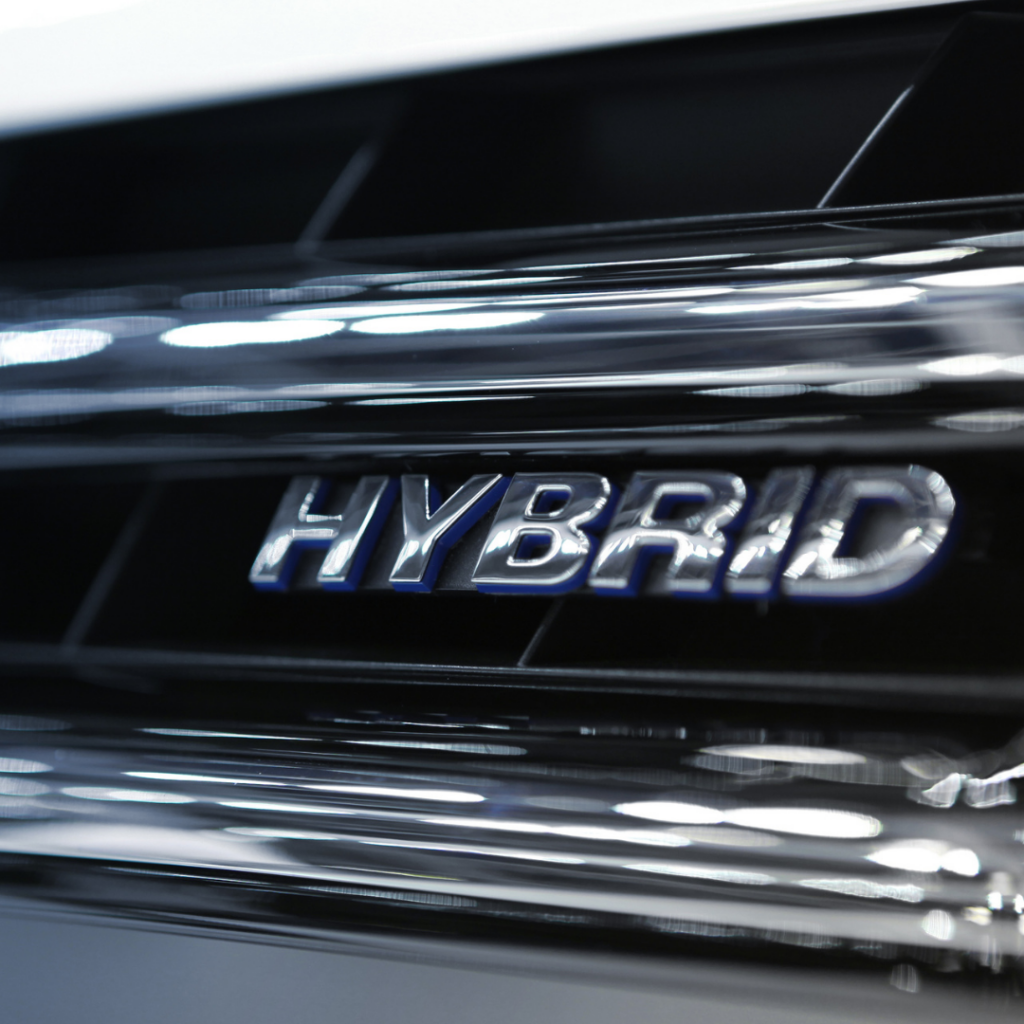

The difference between Hybrid, Plug-In Hybrid and Electric Cars
EVs are becoming more and more popular and it’s easy to see why; with lower running costs, very low or zero emissions. The sale of new petrol and diesel-fuelled cars and vans will be banned in the UK from 2030, ensuring the future of motoring is greener. However, electric vehicles vary in how they work and what they can offer motorists, which is why we’ve put together this handy guide to electric vehicles.
What type of EV you drive will impact how you can use the vehicle, along with whether it requires specialist EV servicing and electric vehicle tyres.
The 3 main types of electric vehicle
There are 3 main types of electric vehicles:
- Self-charging hybrid
- Plug-in hybrid – referred to as a PHEV
- Full electric – or EV
The self-charging hybrid
A self-charging hybrid is often the easiest switch for a driver who is used to a conventional petrol or diesel fuelled vehicle. Self-charging hybrids offer the advantages of lower fuel costs & less environmental impact without the need to plug them in! As these hybrids have no rechargeable plug-in battery or cables, those used to a normal petrol car will find owning & maintaining one very similar to a conventional vehicle. They can be slightly more difficult to maintain as they feature comparatively complex engines and components.
Advantages of self-charging hybrid
- Less expensive than plug-in or electric cars
- Good for short journeys & city centre driving
- No plug-in point needed, good for drivers without off road parking
- No time spent on re-charging
- No “low-battery” worries on long journeys
- Use less fuel & cheaper to run than conventional cars
Disadvantages of self-charging hybrid
- They’re not as environmentally friendly as plug-in hybrids or fully electric cars
- Servicing costs can be higher
- They’re not exempt from tax and there aren’t a many discounts or incentives available
- They’re not as powerful as other electric vehicles


The plug-in hybrid
A plug-in hybrid (PHEVs) is the next step from a Hybrid car towards a fully electric vehicle.
A plug in hybrid is similar to a hybrid vehicle but unlike a hybrid which can be used like a conventional car, a plug-in hybrid will need regular charging. It is designed to run off electric until the battery power runs out, after which a fuel driven engine takes over.
PHEV’s can usually do between 20-30 miles on a single charge, and if you run out of battery the petrol or diesel engine will automatically kick in so you can continue your journey. Brilliant for those who generally use their car for a short commute but want the flexibility to use it for longer journeys without the hassle of stopping to recharge.
If you get into the routine of charging your PHEV overnight when electricity tariffs are lower, you could see motoring costs fall as you’ll be able to travel mainly on electric power, only using your fuel occasionally. You won’t have to worry about whether your battery charge is running low on longer journeys as the petrol/diesel engine can take over when it’s needed.
Advantages of plug-in hybrid
- If the battery runs low the fuel powered engine will automatically kick-in
- Very low cost motoring on short journeys using the electric battery
- Regenerative braking technology reduces energy waste
Disadvantages of plug-in hybrid
- Tend to be more expensive to buy than self-charging hybrids
- You will have to have electric charging facilities available at home which may not be possible for everyone.
- If you rely on the petrol/diesel engine frequently you’ll find the fuel economy isn’t great, especially with the extra weight of the large battery.
- Plug-In Hybrids are usually more expensive to buy than Hybrid vehicles.
- If you’re regularly using your vehicle for long journeys the PHEV may not be the best choice as you’ll soon run out of battery power which will make the PHEV more expensive to run.
Fully electric vehicles
A fully electric vehicle is just that, a vehicle that is solely powered by an electric battery and have no petrol or diesel engine. You can see why electric vehicles are appealing, no more petrol or diesel costs, no oil & filter changes and with many having a range of around 300 miles they are suitable for most driver’s needs.
Of course, the big concern for many looking to switch to electric is how they’ll charge their new car. There are said to be over 30,000 public charging points points dotted around the UK (including those at Eden Tyres & Servicing branches!) you’re never too far from a plug. However, if you haven’t got off-street parking to house your own charging point having a fully electric vehicle may not be a viable option right now, and a self-charging hybrid might be a more suitable alternative.
As the UK government wants to encourage as many drivers as possible to switch to pure-electric vehicles, they have numerous incentives available to entice drivers to make the switch. So if an electric car fits your lifestyle, you could save pounds on vehicle running costs. They are without doubt much kinder to the environment, it’s said that an electric vehicle can save an average 1.5 million grams of CO2 per year which is the equivalent of four return flights from London to Barcelona!
Advantages of electric vehicles
- Very low running costs with no petrol or diesel engine to fuel
- Typically lower maintenance costs
- Inexpensive EV servicing
- Government incentives & discounts available
- Zero emissions and no road tax
- Very quiet & enjoyable to drive
Disadvantages of electric vehicles
- Expensive to buy
- Have a maximum range of miles
- May not be suitable for long journeys
